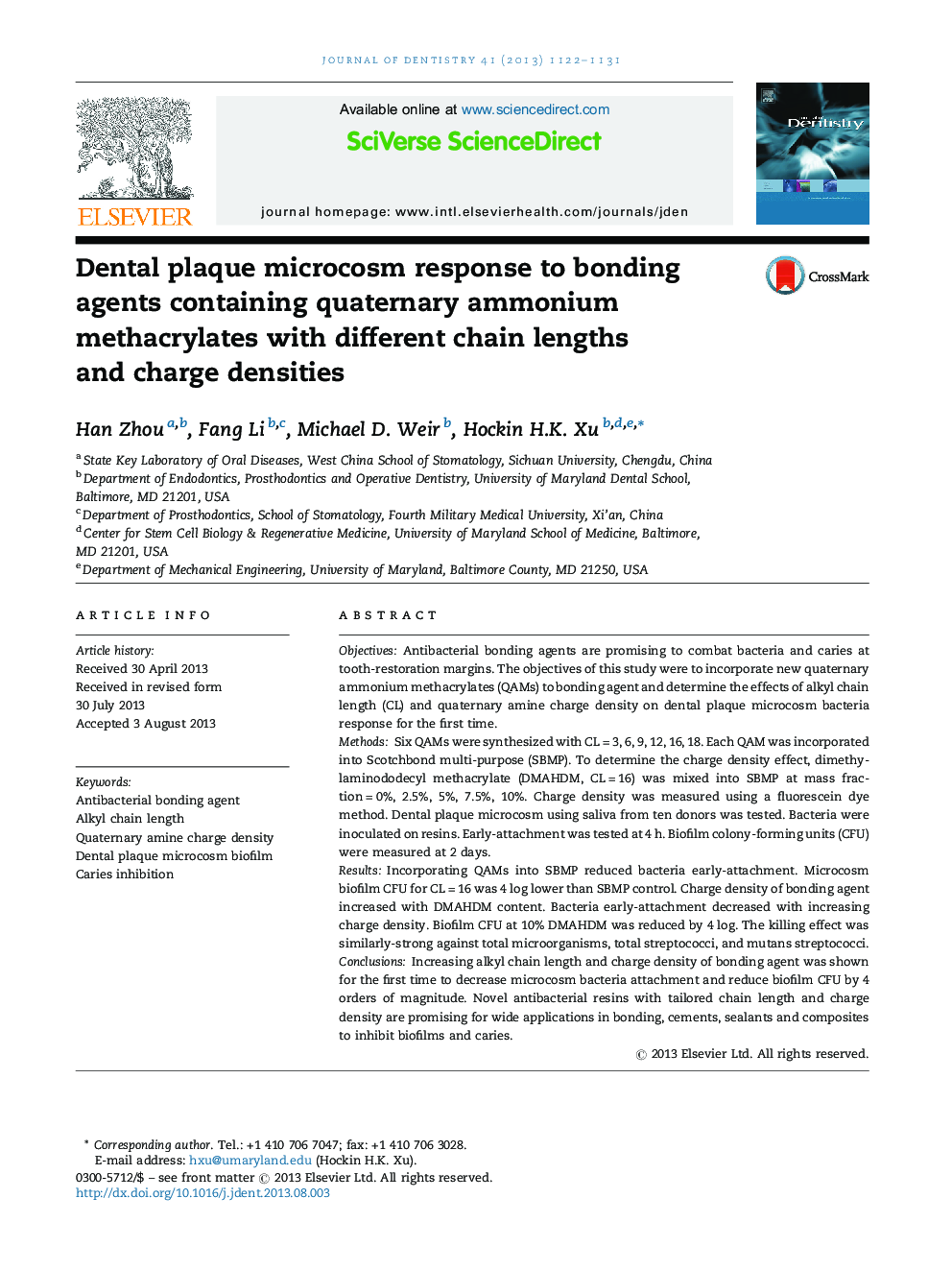| Article ID | Journal | Published Year | Pages | File Type |
|---|---|---|---|---|
| 6053191 | Journal of Dentistry | 2013 | 10 Pages |
ObjectivesAntibacterial bonding agents are promising to combat bacteria and caries at tooth-restoration margins. The objectives of this study were to incorporate new quaternary ammonium methacrylates (QAMs) to bonding agent and determine the effects of alkyl chain length (CL) and quaternary amine charge density on dental plaque microcosm bacteria response for the first time.MethodsSix QAMs were synthesized with CL = 3, 6, 9, 12, 16, 18. Each QAM was incorporated into Scotchbond multi-purpose (SBMP). To determine the charge density effect, dimethylaminododecyl methacrylate (DMAHDM, CL = 16) was mixed into SBMP at mass fraction = 0%, 2.5%, 5%, 7.5%, 10%. Charge density was measured using a fluorescein dye method. Dental plaque microcosm using saliva from ten donors was tested. Bacteria were inoculated on resins. Early-attachment was tested at 4 h. Biofilm colony-forming units (CFU) were measured at 2 days.ResultsIncorporating QAMs into SBMP reduced bacteria early-attachment. Microcosm biofilm CFU for CL = 16 was 4 log lower than SBMP control. Charge density of bonding agent increased with DMAHDM content. Bacteria early-attachment decreased with increasing charge density. Biofilm CFU at 10% DMAHDM was reduced by 4 log. The killing effect was similarly-strong against total microorganisms, total streptococci, and mutans streptococci.ConclusionsIncreasing alkyl chain length and charge density of bonding agent was shown for the first time to decrease microcosm bacteria attachment and reduce biofilm CFU by 4 orders of magnitude. Novel antibacterial resins with tailored chain length and charge density are promising for wide applications in bonding, cements, sealants and composites to inhibit biofilms and caries.
